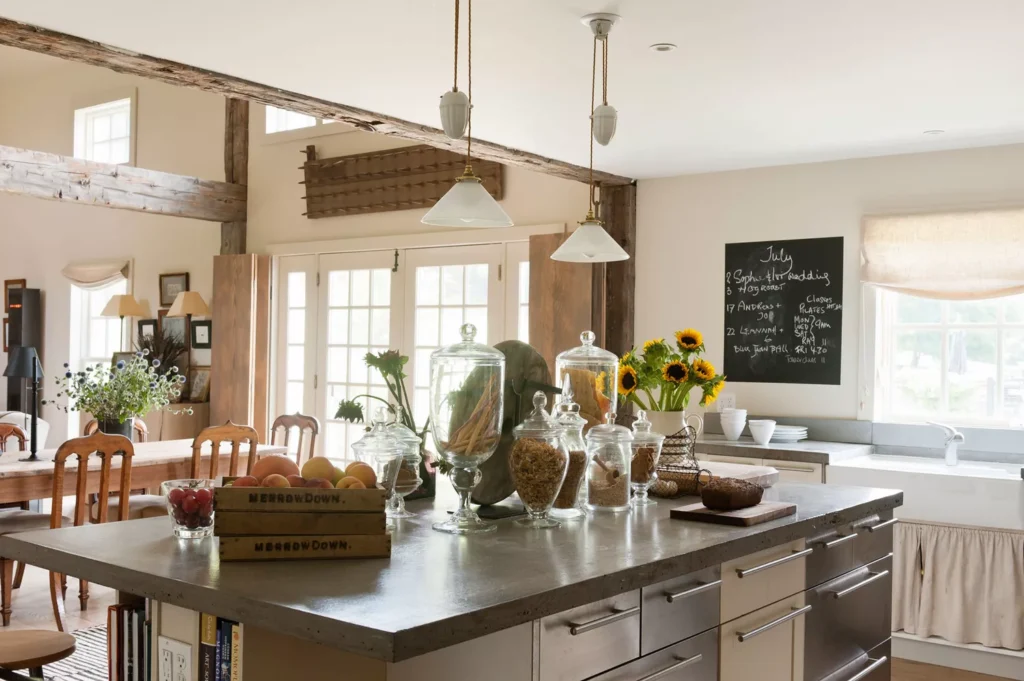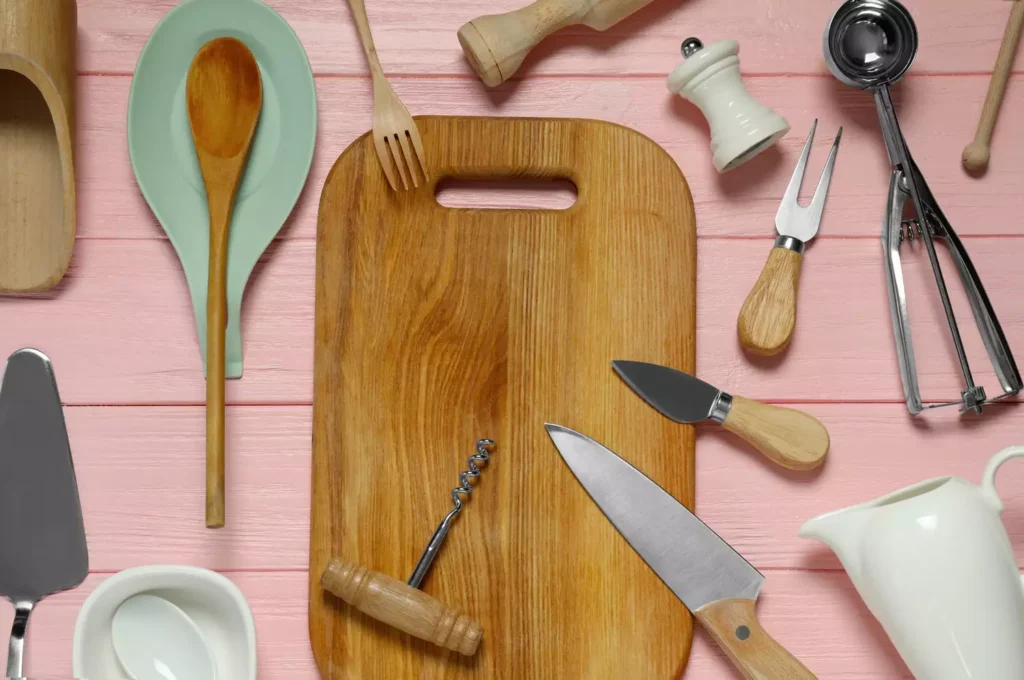Farmhouse kitchens offer a perfect blend of rustic simplicity and modern charm. Admiring kitchen decor ideas is one thing, but implementing farmhouse and rustic décor in your kitchen is a different challenge. Let’s break down a picturesque kitchen to find the must-have elements of a modern farmhouse kitchen.
Most farmhouse kitchens share common features like homemade elements, authentic details, aged materials, and distressed surfaces. We provide ideas to help you incorporate these characteristics for a lived-in, farmhouse feel without a full-scale renovation. Many are small DIY touches that can help create the perfect kitchen for you.
In the realm of farmhouse kitchen design, countertops come in a multitude of colors, offering versatility in contrast to different cabinet shades. Dark countertops complement light or white cabinets, while light ones enhance navy cabinetry and blend seamlessly with white. Selecting a Wood, Tile, or Brick Backsplash is essential. White subway tile with black grout is a classic choice for farmhouse kitchens, providing a fresh and clean appearance that aligns with the homey atmosphere. For a more unconventional approach, exposed wood and brick backsplashes add a unique twist to the farmhouse aesthetic. Farmhouse sinks, characterized by a large basin and apron front, are a staple in farmhouse kitchens. Traditional white porcelain models require regular maintenance but are available in stainless steel for a distinctive look. Lantern pendant lights are a hallmark of farmhouse kitchens, offering focused illumination over cooking areas and allowing for material coordination with other hardware for a cohesive design. Dark hardware, such as black matte finishes on cabinets, drawers, and doors, is typical in farmhouse kitchens. These contrasts well with all cabinet colors, especially white, and aligns with the farmhouse theme. Copper and bronze provide a warmer alternative. Natural wood details are a must in farmhouse kitchens, whether on countertops, islands, or decorative accents. Wood floating shelves or a kitchen island with a contrasting wood countertop are common ways to showcase wood tones. For balance, incorporate natural wood in various areas of the kitchen. Wooden beams, whether structural or decorative, add a rustic touch to kitchens. Hollow or faux wood beams made from lightweight materials can achieve the same effect. Hardwood floors are a popular choice for farmhouse kitchens. The raw appearance of unfinished wood contrasts well with modern appliances, creating a charming cottage ambiance. Engineered wood floors offer the natural wood look with increased durability and less maintenance. Sliding barn doors have become a farmhouse mainstay, fitting into various styles and providing a practical, space-saving solution for hiding pantries or closing off areas of the kitchen.
Not all kitchens can have a sliding door. But you don’t need a slider to get a barn door look. A change of hardware can transform a door. Choose muted tones and matte finishes for a farmhouse look. Generally, in a farmhouse kitchen, only apples in a bowl on the counter are shiny. Everything else like paint finishes, flooring, and hardware is toned down for a natural look. Use satin or semi-gloss paint.
Accessorize with natural textures. Farmhouse style evokes an era before modern engineered materials. Use natural accessories like linen, cotton, basketry, and wood. Consider old-timey materials like glass and metal. For example, cover windows with bamboo shades, use mason jars or galvanized metal objects, install wooden racks or hooks. Repurpose furniture and materials. Farmers are resourceful. Repurposing is essential for an authentic farmhouse feel and sustainable design. Examples include upcycling old crates, turning an antique window into an accent, converting a chest of drawers into an island, transforming an entertainment center, using reclaimed barn wood planks as shelves, and using antique bottles as vases or candleholders. Was this page helpful? Thanks for your feedback! Tell us why! Other Submit

